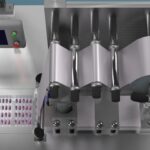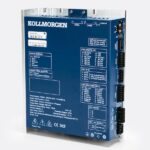Power-transmission and motion-control components abound in packing-industry liquid and gel-filling machines. In fact, the motion systems built of such components serve to control, orient, organize and otherwise guide containers; shuttle them through filling carousels or linear stations; synchronize them with fill-head arrays that dispense the liquid product; and transport them onward to capping, sealing, and labeling cells. One of the primary tasks of such systems is to coordinate the motion of said containers with the filling rate so that each unit receives a precisely controlled volume of product — typically to within a half percent or better of the target volume. Complicating matters is how such filling often occurs as the containers a whiz through or around each station on the line at exceptionally high speeds; how many operations require changeovers to serve the product of different end products; and how sauce, soup, jelly, and beverage liquid viscosities especially can vary with the conditions of the machine and factory environment.

Where fillers handle different beverages, isolation of the fluid from the system pumps and network (save for the filling head) maximizes cleanability and prevents cross contamination. Enclosed linear systems as well as motor and gearing elements having stainless-steel housings and food-grade lubricant further protect against contamination.
The special case of form-fill-seal (FFS) machines
So far, we’ve considered the filling of bottles, cans, and pouches (or tubes) with liquid. But what of powders, granule products, and even discrete products such as cookies that are flowed into their respective packaging types? Here, vertical and horizonal form-fill-seal or FFS machines such as four-side sealers, edge sealers and sachet makers, pillow-pack makers, and flow wrappers are commonly put to use. These packing machines feature a spool (web) of unwelded wrapping material that flows through a circuit to be partially sealed, merge with discretely dispensed product being packaged, and then sealed.

Bulk goods packed by FFS machines include grains and rice, nuts, animal feed and pet foods, tobacco, powdered chemicals, flours and sugars, snack mixes, crafting glitter and confetti, and shipping materials. Discrete goods packed by FFS machines include electronics, toys, stationery, small medical devices, candies and cookies, teabags, and loose pills and capsules. Advanced motion controllers, programming, and HMIs let operators process a variety of items on a given line; predefined recipes speed changeovers.
Though beyond the scope of this article, it’s worth noting that some FFS machines take the form of blow-fill-seal machines to package liquids in bottles and vials much like the FFS packaging of dry goods and products just described.








Leave a Reply
You must be logged in to post a comment.